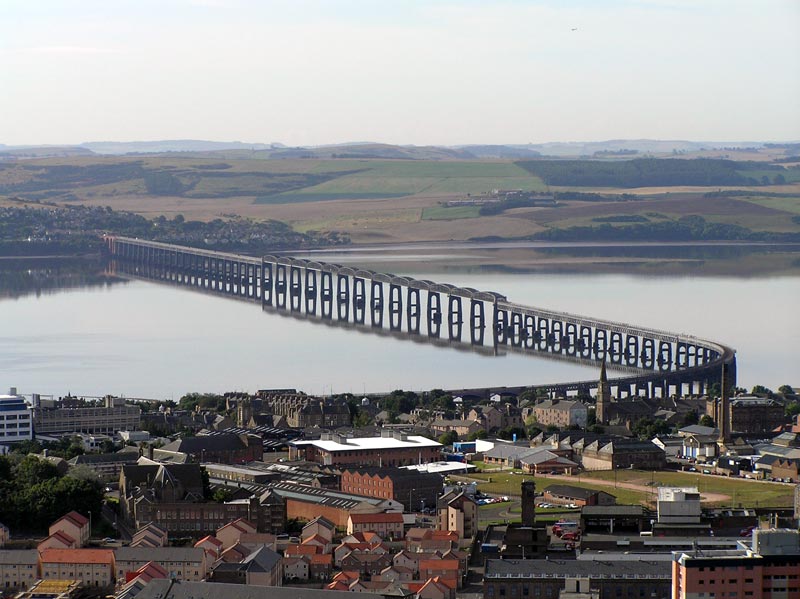On December 28, 1879, the Tay Bridge in Dundee, Scotland collapsed as an express train was traveling across. All 75 people on board were killed. The bridge had been tested and approved by the Board of Trade only 19 months prior and opened to traffic just over 2 years before the collapse. The failure of the bridge also resulted in the loss of the bridge (it was rebuilt nearby) and the temporary loss of a train route. Surprisingly, there was very little damage to the train, which was refurbished and placed back in service.
Although the bridge had passed its Board of Trade testing, problems quickly started to arise. Work crews on the bridge reported severe vibrations whenever a train crossed. An inspector noticed deficient joints, but rather than reporting them, determined he could repair them himself. (Unfortunately, it helped the vibrations but further decreased the structural integrity of the bridge.) Another train crossed the bridge at 6:00 p.m. the evening of the failure and reported a “very rough” journey – the train reportedly let off sparks as it swayed and rubbed against the guardrails.

The train that began to cross the bridge at around 7:00 p.m. was much larger and heavier than the train that crossed at 6:00 p.m. There was also severe weather, and witnesses on the shore report an especially heavy gust of wind as the bridge began to collapse. The board of inquiry determined that the collapse of the bridge was due to the failure of the tower lugs. These tower lugs were experiencing more stress than usual, more than they were designed for, due to an increase in traffic, the heavy winds, and the particularly heavy train which was crossing at the time of failure. In addition, the lugs had been weakened by fatigue cracking caused by large lateral oscillations. The causes of the additional stress were also causes of the oscillations, along with a misalignment in the track. The defective joints – both from design and from the “fix” of the inspector – allowed the oscillations to increase over the (short) life of the bridge.
This bridge failure – still the most famous in the British Isles – did lead to some additional insight in bridge construction, including some lessons still used today. By reviewing these types of failures, we can ensure that 75 people don’t have to lose their life again to get a lesson on building structurally sound bridges. To view the Cause Map of this incident, please click on ‘Download PDF’ above.
The information used to build this Cause Map is from Failure Magazine.
